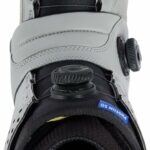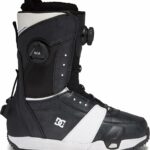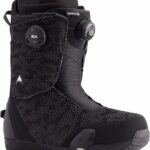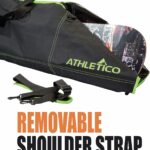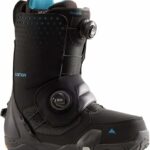Ever had trouble taking off your snowboard bindings after an exhilarating day on the slopes? If so, this article is for you. It’s dedicated to guiding you through the essential steps required to safely and efficiently remove your snowboard bindings, thereby saving you time and energy. You’ll find a step-by-step guide, complete with tips and tricks, to simplify the process and get your snowboard ready for its next adventure. This guide is geared towards both beginner snowboarders who need to learn the basics and more experienced thrill-seekers looking for a quick refresher. So, let’s get those bindings off, shall we?
Understanding Snowboard Bindings
Snowboarding is a complex sport that requires not only skill but also the right equipment. One crucial piece of equipment is the snowboard binding.
Definition of Snowboard Bindings
Snowboard bindings, what are they, you ask? Well, simply put, they are devices that connect a snowboarder’s boots to the snowboard itself. They act as the bridge between your boots and the board, allowing you to control the board while keeping your feet secure and comfortable.
Importance of Snowboard Bindings
Regardless of whether you’re new to snowboarding or already an advanced rider, you can never underestimate the importance of snowboard bindings. They give you control over your board and directly influence your riding performance. They ensure that all your body movements, from the tip of your toes to your lower legs, are transferred to your board.
Different types of Snowboard Bindings
Did you know there are different types of snowboard bindings? Yep, you have strap-in bindings, rear-entry bindings, and step-in bindings, each offering different advantages. For instance, strap-in bindings provide maximum adjustability, whereas rear-entry bindings allow for fast, convenient entry and exit. On the other hand, step-in bindings are all about convenience and speed as they allow automatic boot-to-binding connection.
Reasons for Taking Off Snowboard Bindings
There are times you’ll need to remove your snowboard bindings.
Seasonal Storage
One common reason is for seasonal storage. If you’re saying goodbye to winter and hello to summer, you’ll want to take off your bindings to ensure they don’t get damaged during the off-season.
Equipment Upgrade
Alternatively, you might want to upgrade your equipment. If you’ve been eying that brand new binding model, you’ll need to remove your old ones first.
Bindings Repair or Replacement
Perhaps your bindings have seen better days and need repair or replacement. Or maybe you just need to adjust them for a better fit.
Cleaning or Maintenance
Periodic cleaning or maintenance is also a good reason to take off your snowboard bindings. Keeping them clean and well-maintained can significantly extend their lifespan.
Preparation before Removing Snowboard Bindings
Before you get down to removing your snowboard bindings, there are a few things you need to get ready.
Having the Right Tools
Firstly, you need the right tools. Usually, a Phillips-head screwdriver is enough, but it’s best to have a snowboard tool kit at hand.
Clear Working Space
It also helps to have a clear and comfortable space to work in. You don’t want to lose any screws or small parts.
Understanding Binding Mechanic
Understanding how your bindings work is also paramount. Get familiar with the different components and how they connect to the board.
Anatomy of a Snowboard Binding
To aid in understanding, let’s talk about the anatomy of a snowboard binding.
Highbacks
The highbacks, located at the heel of the binding, allow you to control your board’s tail and support your back foot during heel-side turns.
Straps
Then, you have the straps. They secure your feet in the bindings, providing the connection needed to turn the board.
Base Plate
The base plate is the part that actually attaches to the board, anchoring your boot and the rest of the binding in place.
Heel Cup
The heel cup surrounds your boot’s heel, providing a secure and comfortable fit while also enhancing your control over the board.
Screws and Bolts
Of course, we can’t forget the screws and bolts. These little guys hold everything together and attach the binding to your snowboard.
Step-by-step Guide on how to Remove Snowboard Bindings
Now, onto the main task: removing your snowboard bindings!
Removing the Screws
Start by loosening and removing all the screws. Make sure to do this gradually in a crisscross pattern to avoid warping the base plate.
Taking Off the Base Plates
With the screws off, you can now take off the base plates. Lift them off carefully to avoid damaging them.
Removing the Straps
Next, remove your straps. Some riders prefer to keep them on, but if you’re cleaning or repairing your bindings, it’s better to take them off.
Unclipping the Highbacks
Finally, unclip the highbacks from the heel cups if applicable. Be careful not to misplace any small parts that might come loose.
Safety Precautions when Removing Snowboard Bindings
Safety should always come first, especially when dealing with hardware.
Avoiding Damaging the Board
To avoid damaging your board, never force any parts apart. Always take your time and work gently.
Handling Hardware Carefully
The screws and bolts are small and easy to lose, so handle them carefully. It’s also important to watch out for sharp edges.
Preventing Loss of Small Parts
Remember to keep an eye on any small parts that might come loose. These are often necessary for reattachment and can be a hassle to replace.
Storing the Removed Snowboard Bindings
If you’re not putting your bindings back on right away, you’ll need to store them properly.
Preventing Rust
Preventing rust is important. Make sure your bindings are completely dry before you put them away.
Keeping all Parts Together
Keep all parts, especially the small ones, together. Storing them in a bag or box is a good idea.
Storing in a Cool, Dry Place
Lastly, store your bindings in a cool, dry place. Avoid places with high humidity, which can cause rust and damage.
Resolving Common Issues during Removal of Bindings
There might be issues that arise while you’re removing your bindings, but don’t worry — these can easily be handled!
Dealing with Stripped Screws
Stripped screws can be a real headache, but using a rubber band or a screw extractor can help you get a better grip and remove them.
Coping with Stubborn or Stuck Parts
If any parts are stubborn or stuck, don’t force them off. A bit of penetrating oil can often loosen them up.
Addressing Rusted or Corroded Components
Rusted or corroded components can be cleaned with rust remover or rubbing alcohol. If they’re too worn, it might be time for replacements.
Reattaching the Snowboard Bindings
Reattaching your bindings requires precise work but it’s fairly easy if you kept everything organized.
Positioning the Bindings Correctly
Make sure to position your bindings correctly, according to your riding stance and style.
Screwing Back the Parts
Don’t forget the screws! Put them back in a crisscross pattern and ensure they’re properly tightened, but be careful not to over-tighten.
Ensuring Firm and Secure Connection
Before you hit the slopes, do a final check to ensure a firm and secure connection between your bindings and the board.
Importance of Proper Maintenance of Snowboard Bindings
Proper maintenance is essential for optimal performance of your bindings.
Regular Cleaning
Regular cleaning prevents dust build-up that can hamper the binding’s performance. Using a soft cloth and mild cleaning solution works well.
Scheduled Inspections
Scheduled inspections can help you spot wear and tear early on, allowing for timely repairs or replacements.
Quick Repairs or Replacements
Don’t wait to repair or replace worn parts. Prompt action can prevent problems from worsening.
Ensuring Optimal Performance
Lastly, ensuring optimal performance is the goal of all maintenance. Your bindings are an integral part of your snowboarding experience, so take good care of them.
Removing and reattaching your snowboard bindings may seem daunting at first, but with clear understanding and proper care, it’s really not as hard as it looks. So, go on, give it a try. As with snowboarding itself, practice makes perfect!
- What Snowboard Bindings Should I Get? - January 23, 2024
- What Size Screws For Snowboard Bindings? - January 23, 2024
- How To Snowmobile On Water? - January 23, 2024

